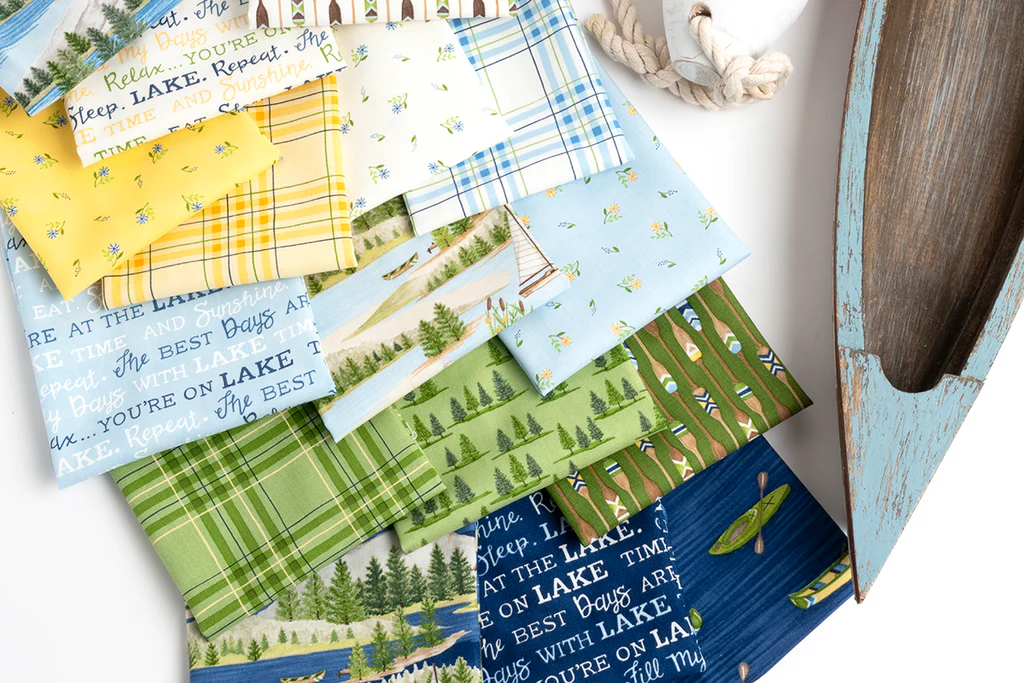
Discover the Best Quilt Fabric Store for Your Creative Projects
Quilting is more than just a craft—it’s a tradition, a method of self-expression, and a way to build community. Whether you’re a seasoned quilter or someone just beginning to explore the art, choosing the right materials can make all the difference. With countless textures, patterns, and fibers available, navigating the ideal quilt fabric store can be both exhilarating and overwhelming. This guide will help you understand the essentials, from fabric selection and color theory to tools and innovative techniques, so your next quilting endeavor is not only beautiful but deeply rewarding.
The Complex Art of Selecting the Ideal Quilt Fabric
When pursuing quilting, fabric type stands as one of the fundamental elements influencing not only the quality but also the aesthetic of the ultimate piece. While cotton remains preeminent for its malleability and availability, it’s crucial to grasp the myriad of fabric types enhancing projects.
Beyond Understanding Cotton: Fabrics Abound
Linen, for instance, introduces texture and resilience, excelling for modern, geographically inspired designs. For quilters aiming to challenge tradition, silk gifts elegance and lustrous sheen, fitting for heirlooms or gifts. Cotton-polyester blends also merit note, easing care and increasing wrinkle resistance to prolong a work’s lifespan.
Comprehending properties such as drape, weight, and breathability empowers quilters to make informed choices, ensuring creations are appealing and practical. Visiting a well-stocked quilt fabric store will give you firsthand experience with these materials, allowing tactile exploration before you buy.
Color Theory in Quilting: Choosing the Perfect Palette
Understanding concepts behind complementary, analogous, and triadic color schemes allows quilters to craft visually stunning designs that resonate with emotion and intent.
By utilizing a color wheel, one can see how complementary colors placed directly across energize a quilt with vibrant contrasts, while analogous hues situated near one another convey tranquility and harmony. Commonly, quilters find inspiration from curated fabric bundles following a palette, simplifying choices.
Additionally, seasonal and thematic elements significantly impact decisions. For example, cozy fall quilts prefer warm earth tones whereas lively summer quilts charm with bright shades. Color theory supplies quilters knowledge to elevate designs from average to extraordinary by considering complex relationships between hues and how they affect mood.
The Invigorating Nature of Texture: Maximizing Your Quilting Experience
The interaction between fabrics with diverse textures can imbue depth and dimension that captivate onlookers and augment physical encounters.
Tactile Variety and Practicality
The interplay between soft, coarse, smooth, and resilient fabrics can evoke contrasting sensations and appeal to the feel. Materials like fleece furnish a cozy, plush experience, ideal for winter quilts that promise heat and solace. Percale cotton offers a crisp, delicate surface suitable for spring-inspired initiatives.
By integrating various textures into a single quilt, quilters can generate visual intrigue and engaging sensory experiences. Procedures like sewing patterns can also heighten texture, emphasizing the fabric’s tactile qualities. Furthermore, texture influences the overall handling and usability of the quilt. For instance, a densely stitched material may withstand wear and tear better, rendering it fit for everyday usage.
A quality quilt fabric store often showcases textured swatches in person, helping quilters fully assess the materials they plan to use.
Notable Quilt Fabric Dealers: A Curated Guide
Hidden Gems: Independent Quilt Shops Worth Exploring
While expansive chain retailers frequently offer ease, smaller fabric shops present singular environments rich with character, community, and customized customer care. These hidden gems regularly carry hand-picked choices of high-quality, exceptional materials not accessible at mainstream vendors.
Establishments like “The Fabric Patch” in Washington or “Huckleberry’s Quilt Store” in Idaho focus on procuring local or handmade fabrics, often mirroring local heritage and skillfulness. Independent shops regularly convene workshops and gatherings, fostering vibrant quilting communities where artisans can exchange ideas and methods.
Shopping at these neighborhood stores goes beyond buying fabric; it’s about forming bonds, uncovering one-of-a-kind finds, and backing handcraftsmanship of the area. Therefore, these hidden gems are essential places for quilters searching for authentic and novel materials for their projects.
Online versus Brick-and-Mortar: Discovering Your Ideal Shopping Experience
The debate between online and real-world fabric shops continues to stir interest in the quilting community. Each offers unique advantages and potential disadvantages.
Online fabric vendors like Fabric.com and Spoonflower present a huge selection of possibilities, letting you shop from the comfort of your home and find unique international prints that may not be available locally. They regularly facilitate effortless price comparisons and user reviews, which can guide purchasing choices.
However, shopping face-to-face lets quilters feel the fabric textures, see accurate colors, and obtain precisely what is needed, reducing concerns about dye lots and fabric feels. The tactile experience of browsing through aisles of fabric can often inspire new ideas and projects.
Ultimately, a balance between both options may serve the quilter best, weaving together convenience and tangible connection, leading to the ultimate satisfaction in fabric selection.
The Role of Local Quilting Communities in Fabric Selection
Quilting communities play an instrumental role in enhancing the fabric-buying experience. Whether through regional quilt guilds sharing insights through virtual meetups or loose affiliation, these collectives provide a wealth of familiarity, exchanging views on textile brands, textures, and hue combinations.
Members often trade cloth, encouraging trial of new materials and minimizing waste. Furthermore, nearby shops sometimes act as centers for these communities, publicizing activities or instruction allowing quilters to connect, compare ideas and swap inspiration on patterns and pursuits.
Engaging with like-minded quilters fosters a sentiment of collaboration, pushing each participant’s imagination as they immerse in broader visual visions. These communities not only enrich the fabric selection process but also cultivate enduring bonds, guaranteeing that the art of quilting continues to thrive.
Quilting Fabrics for Changing Seasons: Trends and Classic Styles
Periodic Inspirations: Textiles that Captivate All Year Round
Each season comes with its own inspirations and flair that can beautifully reflect in quilting fabrics.
Spring often calls for pastel hues, floral prints, and airy, lightweight fabrics that symbolize rebirth, echoing nature’s blooming. Quilters can experiment blending vivid hues and intricate patterns to capture spring’s buzz.
Summer fabrics commonly embrace beachy motifs and bold, saturated shades evoking ease and relaxation. Fabrics printed with tropical designs, bright stripes, and playful patterns are usually used in summer quilts, perfect for picnics or seaside getaways.
In contrast, fall delivers warm earth tones, plaid patterns, and materials like wool and flannel, ideal for making cozy, comforting quilts for chilly evenings by the fire. Winter fabrics are often characterized by festive motifs—think snowflakes and holiday colors—leaning toward deeper shades such as rich navy and crimson.
By selecting fabrics that sync with each season’s spirit, quilters can create pieces that resonate with nature’s rhythm through the year, providing perpetual inspiration.
Timeless Prints: Essential Staples for Every Quilt Maker’s Collection
While passing trends come and go, certain enduring prints are fundamental building blocks in any quilter’s fabric stash. Iconic patterns like the familiar gingham check, cheerful polka dots, and floral motifs maintain their allure across generations, lending adaptability to projects of any style.
A classic floral print can function as either the focal point or a complementary element, integrating seamlessly into a diversity of layouts. Traditional quilt designs, such as Log Cabin and Nine-Patch, have flourished through the decades, frequently telling stories reflective of the artisan’s heritage and local culture.
Textured fabrics like muslin or poplin remain go-to choices thanks to their understated yet beautiful textures that add depth and visual interest. A reliable quilt fabric store will always carry these staples, ensuring timeless options are within reach.
Eco-Conscious Fibers: Sustainable Options for Modern Quilt Artists
In today’s environmentally aware society, demand has surged for eco-friendly fabrics, mirroring a broader cultural shift toward sustainability within the quilting community.
Fibers produced from organic cotton, flax, and hemp not only lessen environmental impact but also guarantee artisans creating these materials adhere to ethical work practices. These plant-derived textiles are grown without harmful pesticides or chemicals, promoting a healthier ecosystem.
Additionally, many quilters are repurposing old garments or textile scraps into novel quilts, thus stimulating creativity while minimizing waste. Brands like Cloud9 Fabrics and Birch Fabrics focus solely on organic and sustainable selections, allowing quilters to align their craft with their values.
Employing eco-conscious materials not only aids environmental initiatives but also invites discussions and heightened awareness regarding sustainability in the quilting sphere.
Essential Quilting Tools for Every Artisan
The ideal tools can significantly elevate any quilting project, transforming an intimidating task into a delightful creative process.
High-quality rotary cutters and mats permit precise slicing, while rulers calibrated for quilting ensure utmost accuracy. An ergonomic seam ripper, though often overlooked, is absolutely necessary for correcting errors. Premium pins—preferably with glass heads—can help secure layers without damaging delicate fabrics.
Investing in a dependable sewing machine tailored to your quilting style is also crucial. Special features such as an expansive throat space or walking foot can greatly assist in handling bulky layers.
Quilting sets, including scissors, unique presser feet, and thread, streamline the initial setup for novices while giving experienced quilters multiple tools to maintain an efficient workflow. Ultimately, having the perfect tools empowers quilters, making each step smoother and more pleasurable.
Innovative Techniques: Modern Quilting Methods Worth Exploring
While traditional quilting persists, groundbreaking techniques continue pushing boundaries and unleashing imaginations.
Embracing the New
Improvisational piecing encourages spontaneity—quilters liberate themselves from rigid rules and give color, shape and scale free rein, crafting strikingly unique works. Such experiential processes cultivate discovery and innovation.
Computerized longarm machines enable intricate customization at an expedited speed from home studios, achieving polished finishes. Paper piecing and English piecing nourish exacting precision for elaborate patterns.
Digital quilting also innovates through digitized embroidery, fabric printing, and more, providing unlimited personalization options. Quilters craft personally meaningful designs tailored to individual flair.
Embracing disruptive methods expands toolkits while ensuring relevance and engagement within modern aesthetics. Unconventional techniques revitalize the craft, just as improvisation, technology, and self-expression sustain an enduring art form.
Finishing Touches: Binding and Quilting to Enhance Your Work
Once piecing is complete, the finalizing flourishes can lift your quilt from satisfactory to exceptional.
Mastering the Finale
Choosing the right binding material and technique can hugely impact the quilt’s overall appearance and lasting quality. Commonly, bindings are straight-cut, bias-cut, or double-folded, each offering unique aesthetics and sturdiness.
By hand is charming yet time-consuming, while by machine more quickly strengthens edges. The actual quilting—or the stitching blending the quilt’s layers—contributes texture and complexity to the final product.
Quilters can select from myriad quilting designs, such as stippling complex clustered motifs or lengthy channel designs, to highlight fabrics without overwhelming patterns. Mastering these concluding methods not only ensures a polished professional look but also increases longevity and usability.
A reputable quilt fabric store often offers workshops and kits to help beginners grasp these finishing touches, ensuring every project concludes on a high note.
Whether you’re building your first quilt or your fiftieth, the journey begins with the right materials, tools, and inspiration. Seek out a local or online quilt fabric store that aligns with your creative spirit and values, and let the art of quilting unfold with every stitch.




